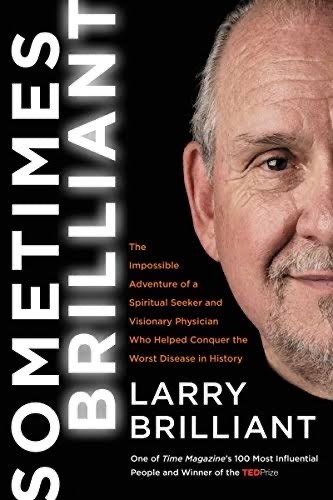
United States epidemiologist and author Larry Brilliant, who helped eradicate smallpox in 1980, has criticized communist China for its “irresponsible behaviour” in its handling of the coronavirus pandemic and urged it to be “radically transparent” if it wanted to fight suspicion over the origins of the virus.
In an interview in Geneva with Agnès Pedrero of the Agence-France Presse, Brilliant noted China’s “suspicious behavior” in refusing to allow in international experts and even blocking Chinese scientists from probing the disease.
“We should be allowed, and the Chinese scientists should be allowed, to study the origin of the disease,” said Brilliant, who helped the World Health Organization (WHO) eradicate smallpox four decades ago.
According to the AFP dispatch, the United States and Australia have called for an international investigation, but China has refused, and is yet to respond to a WHO request that it be invited to help in investigating the origins of the virus.
The global new coronavirus disease (COVID-19) pandemic has killed nearly 300,000 people worldwide in a matter of months.
Scientists believe the virus, which emerged in China late last year, originated in bats and jumped from them directly to humans or through other animals before reaching humans.
But there’s also widespread speculation that the virus, called SARS-CoV-2, was manufactured as a bioweapon or escaped from a Chinese laboratory working on the related SARS virus.
Brilliant, who served as a consultant on the very realistic 2011 pandemic horror film “Contagion,” by acclaimed filmmaker Steven Soderbergh, told AFP that China’s “suspicious behavior” in blocking international experts and even its scientists from probing the origins of the virus was fuelling such theories.
Gestation
Brilliant surmised the outbreak had started even earlier.
“There is a reasonable hypothesis that the virus was percolating in China in November or even earlier, going from human to human,” he said.
He said a much earlier gestation should explain why the Wuhan outbreak at the start of 2020 was “explosive,” since it generally would take weeks for the virus to gather steam.
But he pointed out, “We can’t prove this hypothesis because of the terrible behaviour of the Chinese government.”
Brilliant warned that China’s attempts to stop investigation into the virus’ origins, were “not rational.” In turn these were fuelling rumors that were being “used politically to drum up hatred.”
Brilliant dismissed theories that the virus might have been manmade. He explained that studies of the genome show it is 95-percent identical to the original SARS virus, which caused a global scare in 2003.
“If it were a bioweapon, there would have been substantially more differences, and it would have been straightforward to see those differences as having been engineered,” he explained.
US officials have expressed suspicions that the virus escaped from a lab in Wuhan, China. But if that is the case, Brilliant said the virus was caused by an accident.
“Nobody will be mad if it was an accident, or if it had been in the country earlier” than December, when the first alerts went out from Wuhan, he said.
“But the suspicious behaviour is not in anybody’s best interest.”
“I would say to my Chinese friends that it is in their interest to find out where the first cases were, and to be radically transparent,” he said.
More tests and tracings
Brilliant urged governments to scale up testings and tracings to stem the outbreak. He explained that when he helped in the WHO campaign against smallpox, there were global cooperation and massive efforts made to detect every case, and track down and fully isolate every contact.
But today, he noted, rampant nationalism has replaced international cooperation. Many countries appear to have given up on testing and contact tracing as too hard, and imposed lockdowns instead.
He said countries that had abandoned tests and tracings were “irresponsible.”
“That’s irresponsible… It’s not that hard,” he said. “We can put a man on the Moon.”
“Get everybody off their asses and make the tests.”
Memoirs
Declared by Time Magazine in 2018 as one of the world’s “Top 100 Most Influential People,” Brilliant, 64, has worked with the WHO in eradicating smallpox and with the United Nations in treating blindness and Guinea worm disease in developing countries. He holds technology patents and heads several philanthropic enterprises. notably Google.org.
Unconventional for a scientist and an intellectual, he came to his important work of fighting diseases through soul-searching and “hippiedom.” He was a product of the Flower Power Revolution of the 1970s and became a disciple of a Hindu mystic, which he recalls in his best-selling 2016 memoir, “Sometimes Brilliant,” subtitled “The Impossible Adventure of a Spiritual Seeker and Visionary Physician Who Helped Conquer the Worst Disease in History” (HarperCollins).
In the book, he writes of the early inspiration provided by Martin Luther King when the latter delivered a talk at the University of Michigan, where Brilliant took up public health. Depressed by the death of his beloved father, Brilliant later became a civil rights activist and famously defied a coast guard blockade to aid Native Americans who had taken over Alcatraz.

“I was part of a generation that believed in a new vision for America,” he writes. “It was not a class struggle, it was a generational belief system.” When certain elements of the US left resorted to violence, he went to live in a Hindu monastery in the Himalayas and became a follower of the Maharaji Neem Karoli Baba.
Brilliant recounts his epiphany. In the ashram devotees had gathered and paid homage to the Maharaji by offerings of fruits and flowers arranged to form the Hindi word for god, RAM. But one of the apples in the last letter had fallen, so he proceeded to pick the fruit up when the Maharaji burst out of his room and stepped on his hand.
The guru asked Brilliant repeatedly where he had been and guessing his follower had been to the lake, asked him, “Doctor America, what were you doing at the lake? . . . Oh yes I know, you were talking to God. Did you ask God for something?”
It was then that Brilliant felt the divine spark. Since he’s a physician, he describes the experience with metaphors from physiology.
“It was like (the Maharaji) was on fire,” he writes. “I could not catch my breath. My spine buzzed . . . Time slowed, then stopped entirely. But my heart still pounded like a jackhammer. The sparks in my spine became a four-lane highway of lightning bolts, moving from my sacrum up to my belly, to my chest and neck. I could feel my neck veins bulge.”
Later on, the Maharaji repeated the name of God (“Ram”), and Brilliant writes he suddenly felt loved. From physiology, his language turns hippie: “Maharaji had lifted the veil of maya, the illusion that makes us all feel separate and alone. When he did, he took me to a place where I forgave everything and everyone, including myself, and found nothing but love. This was real magic.”
Right there and then, his guru told him to fight smallpox. The rest was brilliant history. INQ









































